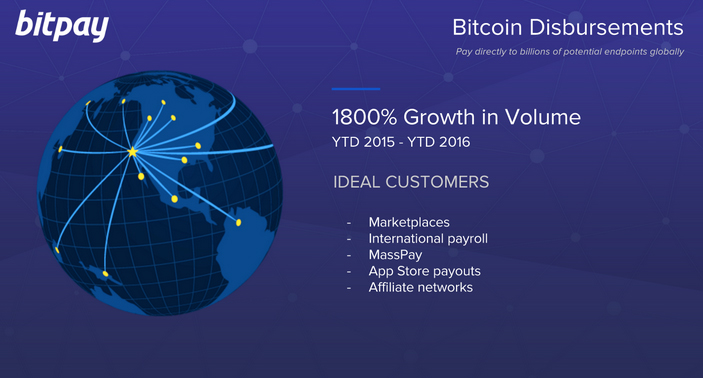Bitcoin Commerce Increases by 1,800% at BitPay
Bitcoin adoption continues to increase with Sonny Singh, Chief Commercial Officer at BitPay , revealing in a public statement that BitPay has experienced a 1,800% increase growth in volume.
Some of this growth is due to affiliate networks, like Amazon or Google AdWords, which have increasingly adopted bitcoin, according to Singh, for a variety of reasons. Primarily, the dispersed nature of affiliate network participants across the globe makes fiat transfers difficult, especially if credit cards are not available or fast bank transfers, such as SEPA, are not an option.
With bitcoin, a payment can be sent to someone in USA just as easily as to someone in Africa, with the receiver requiring no bank account. In most countries, receivers can then exchange them on a local bitcoin exchange or spend them directly with merchants that accept bitcoin. Moreover, according to Singh:
“Bitcoin is far less expensive than credit cards, with zero chargebacks and no chance of identity theft. Because of this, bitcoin processors like BitPay can offer merchants services fees of on average between 1% – 2%, while credit card transactions costs range from 2% – 6%. Since credit card fees don’t cover the merchant’s own cost for losses to chargebacks or payment fraud, credit cards stack up even more poorly when compared to bitcoin.”
An interesting example is Turkey which has recently blocked merchants from using PayPal. The result, “a dramatic increase in advertisers and affiliates paying and receiving bitcoin,” according to Singh, which cannot be directly censored. Increasing bitcoin’s popularity in Turkey for online payments and general commerce.
More widely, from Brazil to Argentina, India and China, bitcoin is finding wider adoption, especially when it concerns sending or receiving global payments, as these countries lack an efficient banking infrastructure. Bitcoin, replacing the need for a bank account, allows them to join the global economy in an efficient manner with transfers in mere minutes, providing developing countries with a way to leapfrog from an outdated banking system to a 21st century global payment network.
Images from Shutterstock and BitPay.
